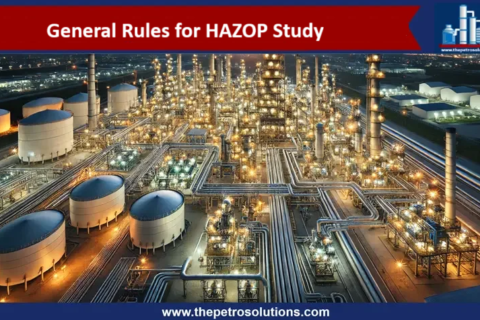The Nelson Complexity Index measures the secondary conversion capacity of a petroleum refinery by comparing it with the primary distillation capacity. The complexity index provides an easy metric for quantifying and ranking the complexity of various refinery units. A complex refinery with high complexity index is one with a large number of high-value conversion units. A low-complexity refinery has fewer and fewer value-adding units.
Refineries with a low complexity index may only be able to handle a limited range of crude oil grades, producing low-quality products while a refinery with a high Nelson Index can process low-quality crude oils in addition to producing more high-value superior quality petroleum products. This allows it to take advantage of the cheaper crude oil processing, rather than expensive high-quality crude oils purchased thus increasing the refinery margins.
History of the Nelson Complexity Index
Nelson published a list of complexity factors in the Oil & Gas Journal (OGJ) for the major process units in the 1960s (Nelson 1976a, b, 1977), which was later updated by Farrar (1985, 1989) and continued to the present day in a commercial format. It was introduced to quantify the relative cost of processing units that make up a refinery. This method accounts only for the refinery processing units of the Inside Battery Limits (ISBL) units, and not for off-sites and utilities. Table 1.0 presents a list of complexity factors for refinery processes that are used in the calculation of the refinery complexity index.
Complexity Factor for Refinery Units
To calculate the index, complexity factors are used which compare the cost of upgrading units to the cost of the crude distillation units. The complexity factor values assigned to each type of process unit range from 1 to 20. A complexity factor of 1 is assigned to the atmospheric distillation unit and expresses the cost of all other units in terms of their cost relative to distillation. The complexity factor number mainly reflects the relative capital cost or grass route construction cost of different units, but they are also supposed to correlate with relative operating costs and margin contribution.

High Capital, Operating, and Maintenance Costs of Complex Refineries
The more complex the refinery, the more capital cost is invested to achieve its configuration, and therefore, the greater the cost to insure, and replace the process units. Hence, refinery complexity is frequently used by insurers in determining premiums. Furthermore, more complex refineries also require heavy operating and maintenance costs.
Types of Petroleum Refineries and Complexity Index
Petroleum refineries can be classified as topping, hydroskimming, cracking, and deep conversion, in order of both increasing complexity and cost. A high-conversion coking refinery has a complexity index of 9 compared with a topping refinery which has a complexity index of 1. The ability to meet stringent product specifications, notably ultra-low Sulfur gasoline and diesel fuel, is also a characteristic of high-complexity refineries. Nelson complexity index ranking can be utilized to identify the refinery type.

Applications of the Nelsons Complexity Index
- The complexity index provides an easy number that quantifies the complexity of a refinery and applies in facility classification, cost estimation, sales price models, and other uses.
- Nelson Complexity Index uses simple numbers to represent the cost of adding complex enhancement systems to a refinery. This relative cost index is useful for investors, regulators, and accountants.
- The complexity number for a refinery is an attempt to summarize a refinery’s configurations in a single measure.
- The complexity Index indicates not only the investment intensity or cost index of the refinery but also its potential value addition. Thus, the higher the index number, the greater the cost of the refinery and the higher the value of its products.
- The complexity number provides a useful single measure for comparing multiple refineries with different configurations. A refinery with a higher complexity number can be assumed (all else being equal) to have higher yields of light products per barrel of crude processed, higher margins, a higher asset value, and higher construction costs.
- Operating costs are generally thought to correlate with complexity, so the complexity number provides a useful normalization factor when benchmarking refinery cost performance
- A refinery’s market value (when bought or sold) is generally thought to correlate with complexity number since complexity correlates roughly with both costs and margins. In this case, the complexity number provides a useful normalization factor when comparing refinery transaction values.
- Complexity factors are derived from cost data and are therefore useful in cost estimation, but to be an accurate and reliable indicator of cost, they must be up-to-date and representative of the region of interest.
- A high refinery complexity indicates a high level of capital investment in sophisticated process units, a higher cash margin potential per barrel of throughput, and greater refining asset value per barrel of distillation capacity, for all things equal.
Nelson Complexity Index Calculations
The complexity rating of a refinery is calculated by multiplying the complexity factor of each process by the percentage of crude oil it processes, and then adding these individual factors. The formula for Nelsons Complexity Index calculation is as follows;

Where:
- Fi is a complexity factor
- Ci is a unit capacity
- CCDU is the capacity of the crude distillation unit
- N is the number of all units
Example 1
If an oil refinery has a crude distillation unit (100,0000 bbl/day), vacuum distillation unit (40000 bbl/day), and catalytic reforming unit (20000 bbl/day). By taking complexity factors of CDU =1, Vacuum Distillation Unit = 2, and Catalytic reforming Unit = 5, Nelson Complexity Index can be calculated as follows;
NCI = 1*(100/100) + 2*(40/100) + 5*(20/100) = 1.0 + 0.8 + 1.0 = 2.8
This is a simple Hydroskimming oil refinery.
Example 2
An oil refinery with 120,000 bbl/day capacity with the following units and capacity.
Crude Distillation= 120, Kbbl/day, Vacuum Distillation = 42 Kbbl/day, Catalytic Reforming = 21 Kbbl/day, Catalytic Hydrofining= 33 Kbbl/day, Isomerization Unit=14 Kbb/day, Catalytic Cracking= 23 Kbbl/day Visbreaking = 15Kbbl/day, Thermal Cracking= 14 Kbbl/day
NCI= 1*120/120+2*(42/120) +5*(21/120) +3* (33/120) +15*(14/120) +6*(23/120) +2.5*(15/120) +3*(14/120)
NCI= 1+0.7+0.87+0.82+1.75+1.15+0.31+0.35
NCI= 7.0, This refinery comes under the category of a Cracking Refinery.
Top References
- www.wikipedia.com
- www.investopedia.com
- Petroleum Economics and Engineering Edited by Hussein K. Abdel-Aal Mohammed A. Alsahlawi
- A review of refinery complexity applications Mark J. Kaiser
For further information, discussion and queries please comment in the box below or contact us at admin@ or follow us on Facebook & LinkedIn.
Certified Functional Safety Professional (FSP, TÜV SÜD), Certified HAZOP & PHA Leader, LOPA Practitioner, and Specialist in SIL Verification & Functional Safety Lifecycle, with 18 years of professional experience in Plant Operations and Process Safety across Petroleum Refining and Fertilizer Complexes.
- Nasir Hussainhttps://thepetrosolutions.com/author/admin/
- Nasir Hussainhttps://thepetrosolutions.com/author/admin/
- Nasir Hussainhttps://thepetrosolutions.com/author/admin/
- Nasir Hussainhttps://thepetrosolutions.com/author/admin/






